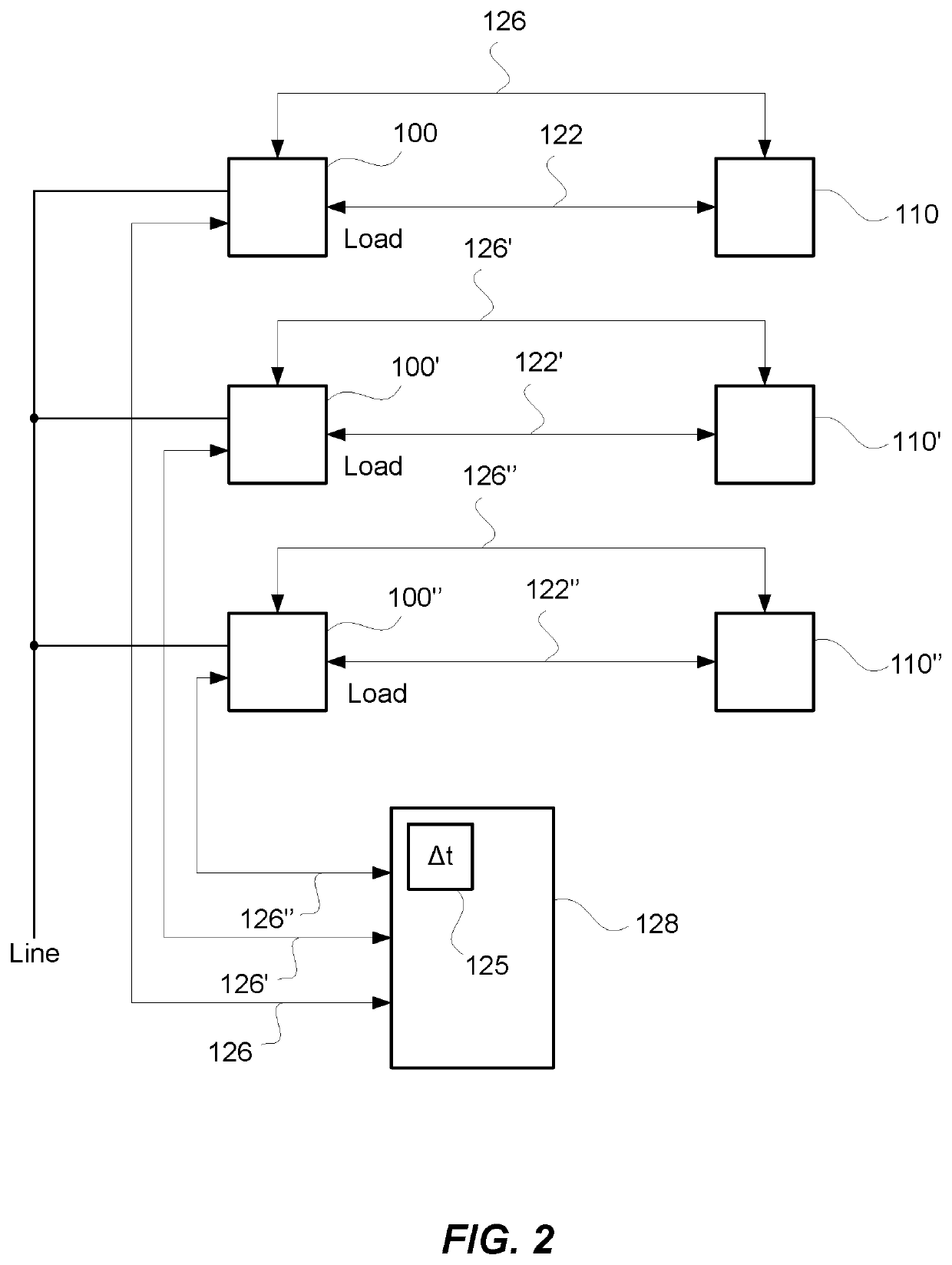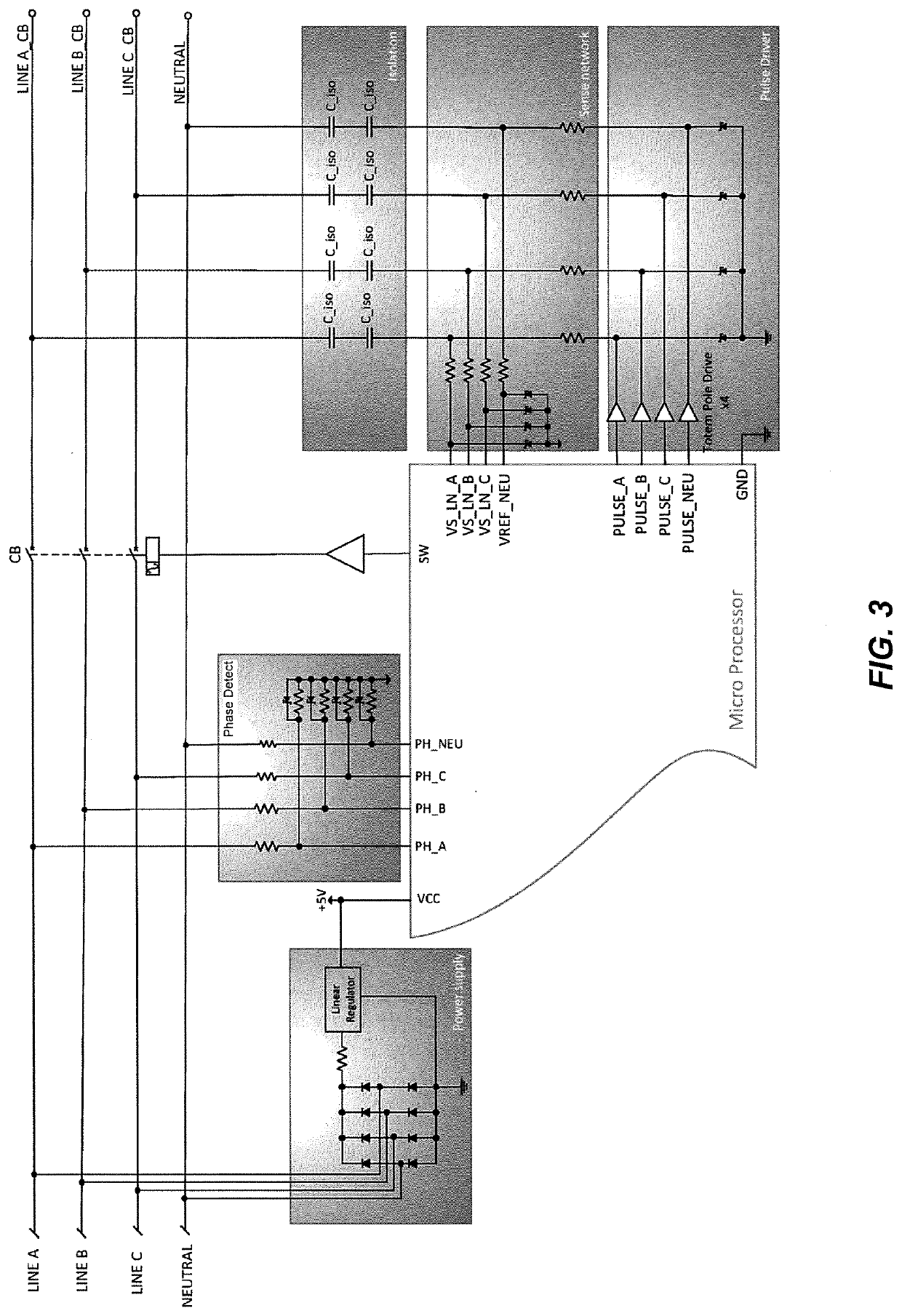Electronic status reporting circuit breaker
a technology of electronic status reporting and circuit breakers, applied in the direction of circuit breakers, instruments, process and machine control, etc., can solve the problems of circuit breakers, no information available, breaker will trip,
- Summary
- Abstract
- Description
- Claims
- Application Information
AI Technical Summary
Benefits of technology
Problems solved by technology
Method used
Image
Examples
Embodiment Construction
[0039]Referring now to the drawings, wherein like reference numerals designate corresponding structure throughout the views.
[0040]FIG. 1 depicts a circuit breaker 100 having a housing 102 with a handle 104. The circuit breaker could be any type of circuit breaker including, but not limited to having a line connection 106 that comprises a “stab” circuit breaker that includes two tines that connect to an electrical service bus bar in an electrical panel and a screw type connector comprising load connection 108 to be attached to a load 110 (FIG. 2); or line connection 106 could comprise a screw type connection for attaching to an electrical service bus bar in an electrical panel. There are numerous configurations that are possible and the above are just provided as two examples.
[0041]An overcurrent protection circuit 112 is provided that receives incoming power from line connection 106. Overcurrent protection circuit 112 is provided to measure the current 113 passing through the circui...
PUM
 Login to View More
Login to View More Abstract
Description
Claims
Application Information
 Login to View More
Login to View More - R&D
- Intellectual Property
- Life Sciences
- Materials
- Tech Scout
- Unparalleled Data Quality
- Higher Quality Content
- 60% Fewer Hallucinations
Browse by: Latest US Patents, China's latest patents, Technical Efficacy Thesaurus, Application Domain, Technology Topic, Popular Technical Reports.
© 2025 PatSnap. All rights reserved.Legal|Privacy policy|Modern Slavery Act Transparency Statement|Sitemap|About US| Contact US: help@patsnap.com



